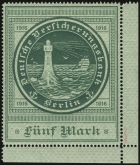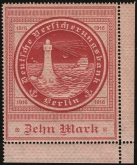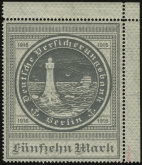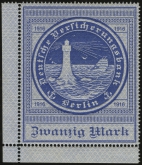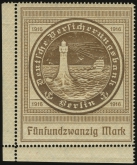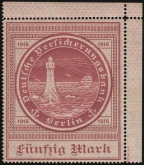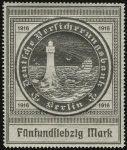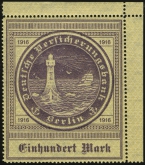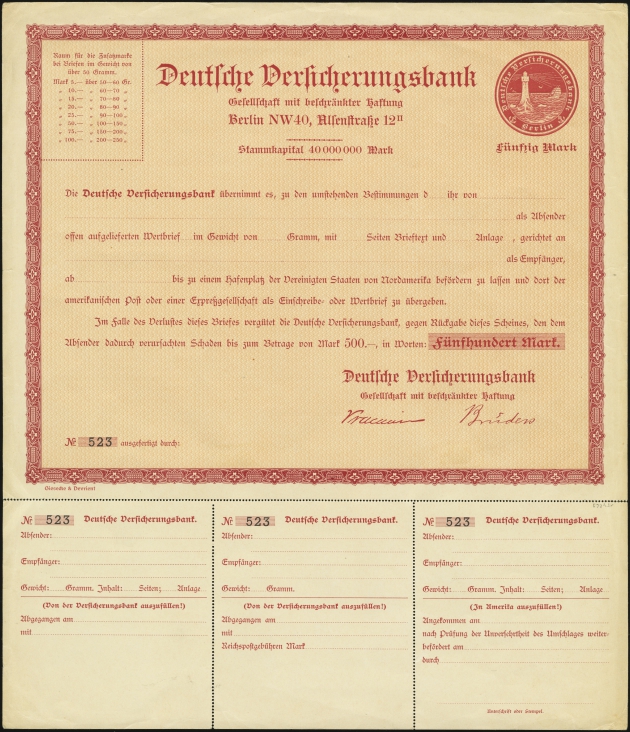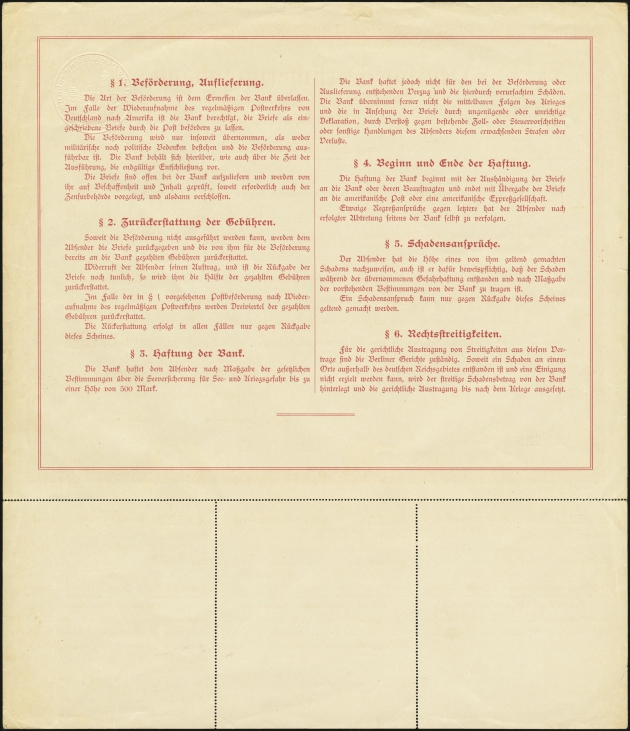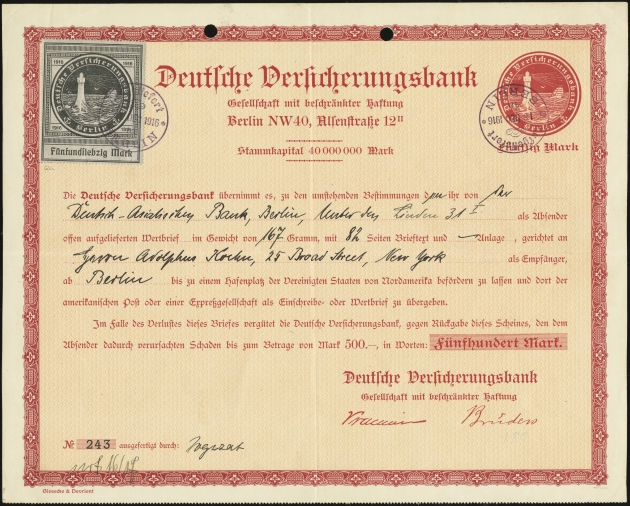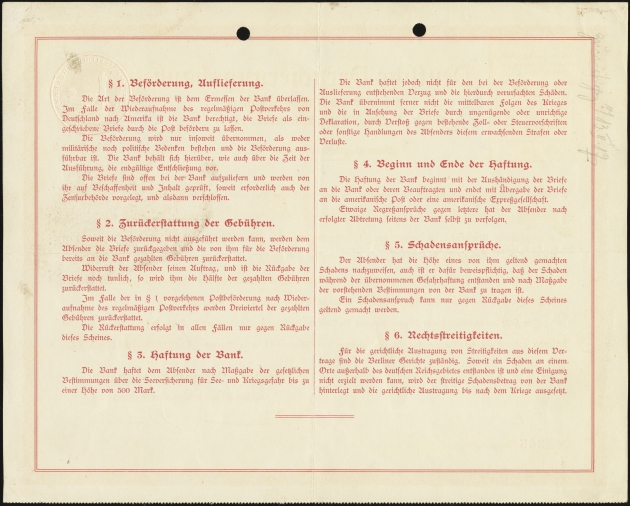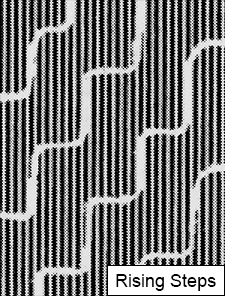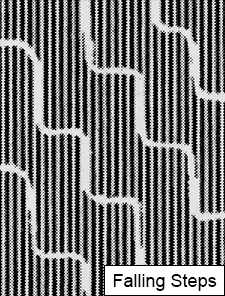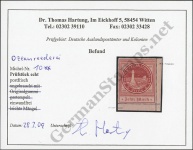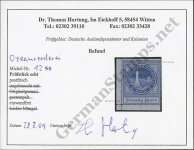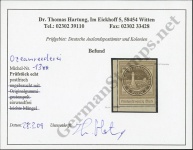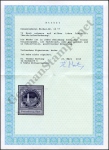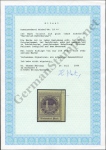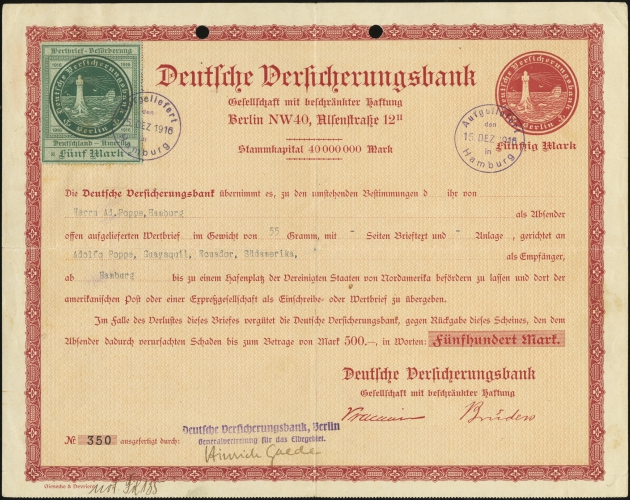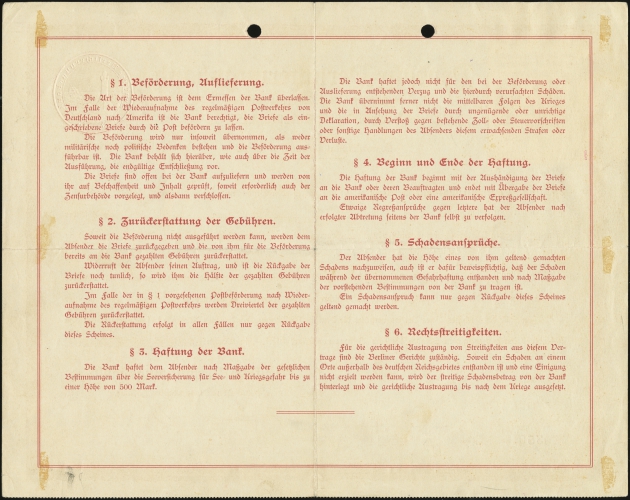Ozeanreederei – Second Issues
By 1916, the German war effort was suffering under the weight of the Entente naval blockade, which had been in force since shortly after the outbreak of the war. Having been unsuccessful in its attempts to break the blockade, Germany decide to construct a class of unarmed cargo U-boats to serve as blockade runners. This class, the U-151 class, was originally to consist of seven boats, but only two, Deutschland and Bremen, were completed in accordance with the original specs. The remaining five were completed as heavily armed long-range U-boats.
The Deutschland and Bremen were built by the Deutsche Ozean-Reederei (German Ocean Shipping Company), a subsidiary of the Norddeutscher Lloyd (North German Lloyd) shipping company and the Deutsche Bank, which was created explicitly for this enterprise.
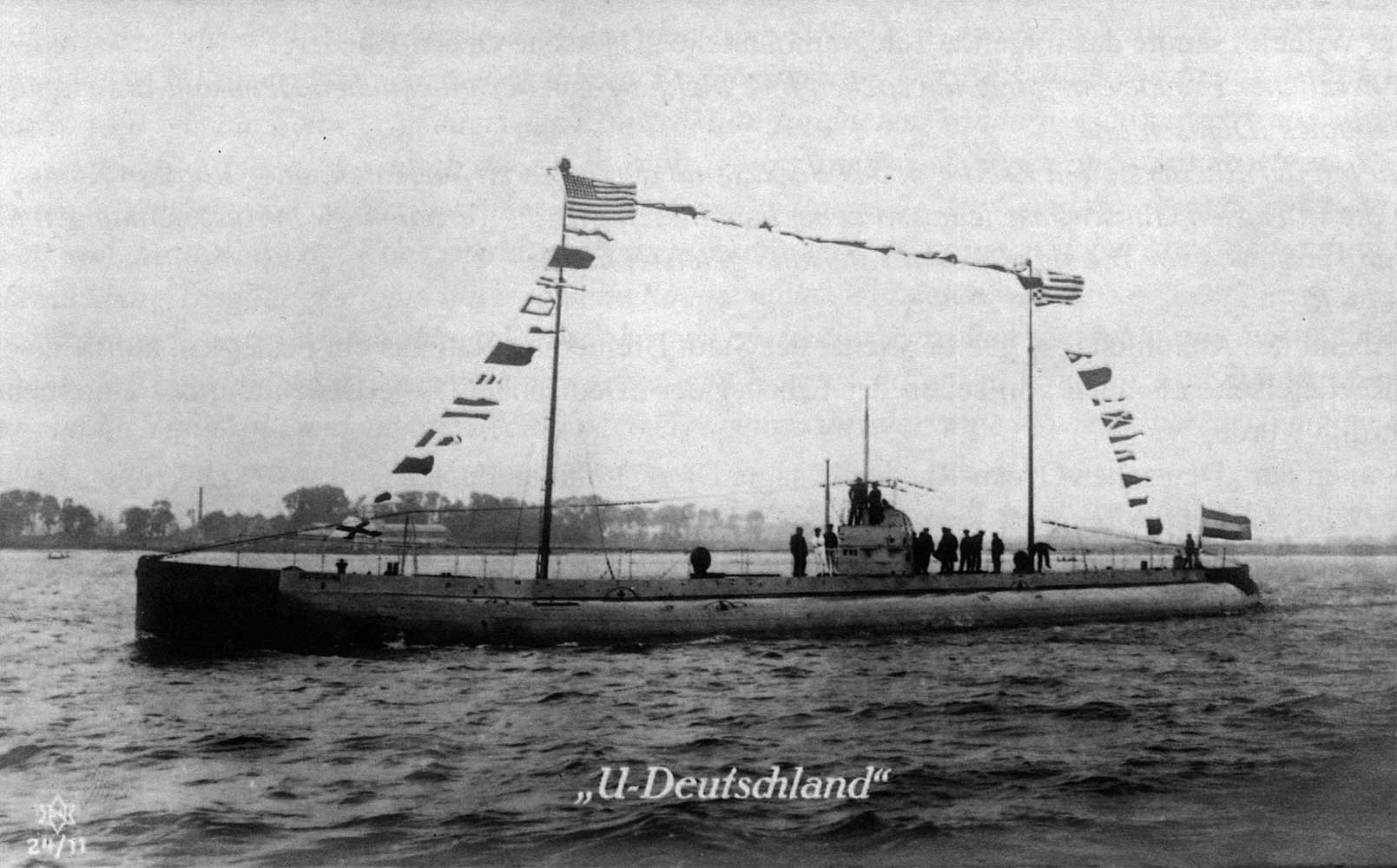
The Deutschland made two voyages to the U.S. In the summer of 1916, she delivered a cargo of chemical dyes, medical drugs, gems, and mail to Baltimore, Maryland, then returned to Bremerhaven with a cargo of nickel, tin, and crude rubber. In the fall of 1916, she delivered a cargo of gems, securities, and medicinal products to New London, Connecticut, and returned with a cargo of silver bullion. Before the Deutschland could embark on a third voyage, relations between Germany and the U.S. deteriorated significantly, so she was converted to an armed U-boat, the U-155.
The Bremen departed Bremerhaven in September 1916 for Norfolk, Virginia. She reportedly carried funds which were to be used to pay an American firm to build more cargo submarines for Germany. She never arrived in Virginia, and her fate remains unknown.
To mail an item via the Deutsch Ozean-Reederi, the sender had to bring the mail to the Insurance Bank offices in either Berlin, Hamburg, or Bremen. The Insurance Bank would then issue an insurance certificate which bore an imprint of the 50 Mark Ozean-Reederei design, and which was valid for mailings up to the 50 Mark rate (up to 50 grams) The certificate had three detachable coupons, one each for the insurance bank, the agency bank, and the sender.
If the mail or package required more than 50 Marks postage and insurance, a separate insurance stamp was attached to the insurance certificate to cover the difference.
The normal issues of these stamps bear a rising steps watermark (“X” suffix). However, three values can be found with a falling steps watermark (“Y” suffix).
The second set of Ozean-Reederei stamps differs from the first set in that they do not have the inscription “Wertbrief-Beförderung / Deutschland-Amerika 1916” (Insured Letter Carrier / Germany-America 1916). They also feature a watermark.
Ozeanreederei – Second Issues
By 1916, the German war effort was suffering under the weight of the Entente naval blockade, which had been in force since shortly after the outbreak of the war. Having been unsuccessful in its attempts to break the blockade, Germany decide to construct a class of unarmed cargo U-boats to serve as blockade runners. This class, the U-151 class, was originally to consist of seven boats, but only two, Deutschland and Bremen, were completed in accordance with the original specs. The remaining five were completed as heavily armed long-range U-boats.
The Deutschland and Bremen were built by the Deutsche Ozean-Reederei (German Ocean Shipping Company), a subsidiary of the Norddeutscher Lloyd (North German Lloyd) shipping company and the Deutsche Bank, which was created explicitly for this enterprise.

The Deutschland made two voyages to the U.S. In the summer of 1916, she delivered a cargo of chemical dyes, medical drugs, gems, and mail to Baltimore, Maryland, then returned to Bremerhaven with a cargo of nickel, tin, and crude rubber. In the fall of 1916, she delivered a cargo of gems, securities, and medicinal products to New London, Connecticut, and returned with a cargo of silver bullion. Before the Deutschland could embark on a third voyage, relations between Germany and the U.S. deteriorated significantly, so she was converted to an armed U-boat, the U-155.
The Bremen departed Bremerhaven in September 1916 for Norfolk, Virginia. She reportedly carried funds which were to be used to pay an American firm to build more cargo submarines for Germany. She never arrived in Virginia, and her fate remains unknown.
To mail an item via the Deutsch Ozean-Reederi, the sender had to bring the mail to the Insurance Bank offices in either Berlin, Hamburg, or Bremen. The Insurance Bank would then issue an insurance certificate which bore an imprint of the 50 Mark Ozean-Reederei design, and which was valid for mailings up to the 50 Mark rate (up to 50 grams) The certificate had three detachable coupons, one each for the insurance bank, the agency bank, and the sender.
If the mail or package required more than 50 Marks postage and insurance, a separate insurance stamp was attached to the insurance certificate to cover the difference.
The normal issues of these stamps bear a rising steps watermark (“X” suffix). However, three values can be found with a falling steps watermark (“Y” suffix).
The second set of Ozean-Reederei stamps differs from the first set in that they do not have the inscription “Wertbrief-Beförderung / Deutschland-Amerika 1916” (Insured Letter Carrier / Germany-America 1916). They also feature a watermark.

